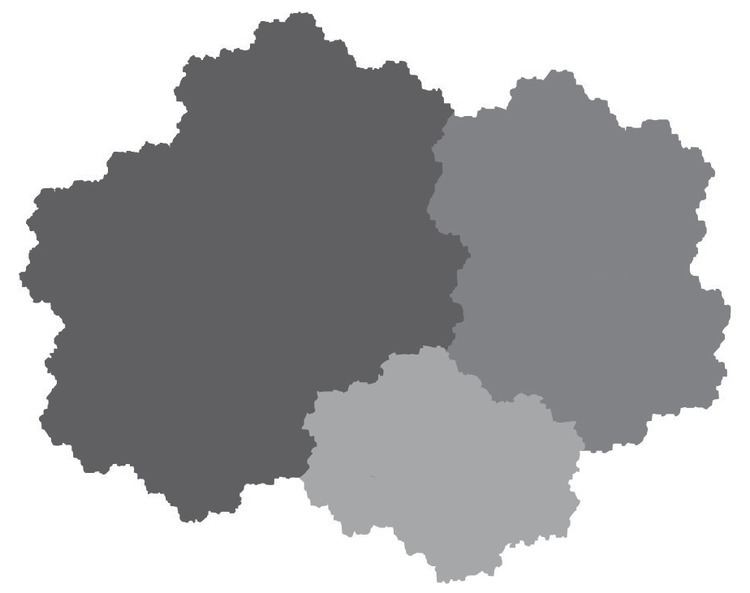 | ||
In mathematics, the Rauzy fractal is a fractal set associated to the Tribonacci substitution
Contents
It has been studied in 1981 by Gérard Rauzy, with the idea of generalizing the dynamic properties of the Fibonacci morphism. That fractal set can be generalized to other maps on a 3 letter alphabet, generating other fractal sets with interesting properties, such as periodic tiling of the plane and self-similarity in three homothetic parts.
Tribonacci word
The infinite tribonacci word is a word constructed by applying iteratively the Tribonacci or Rauzy map :
We can show that, for
Fractal construction
Let's consider, now, the space
1) Interpret the sequence of letters of the infinite Tribonacci word as a sequence of unitary vectors of the space, with the following rules (1 = direction x, 2 = direction y, 3 = direction z).
2) Then, build a "stair" by tracing the points reached by this sequence of vectors (see figure). For example, the first points are:
etc...Every point can be coloured according to the corresponding letter, to stress the self-similarity property.
3) Then, project those points on the contracting plane (plane orthogonal to the main direction of propagation of the points, none of those projected points escape to infinity).
Properties
Variants and generalization
For any unimodular substitution of Pisot type, which verifies a coïncidence condition (apparently always verified), one can construct a similar set called "Rauzy fractal of the map". They all display self-similarity and generate, for the examples below, a periodic tiling of the plane.
